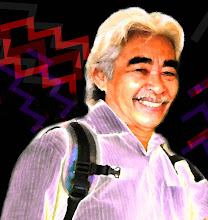Who is a leader?
A leader is a person you will follow to a place you wouldn't go by yourself.
( pg.163, Joel Arthur Barker, Paradigms - the business of discovering the future (1993)
Guess how he does it?
A leader lead between paradigms.
While managers enhance paradigms e.g. through quality circles or continuous improvement ( evolution), leaders with their intuitive judgement assess the seeming risk, determine that shifting paradigms is the correct thing to do and because they are leaders instill the courage in others to follow.
The concepts can be applied in 2 examples as illustrated below:
#1 Keep your paradigm; change your customer
e.g. Deluxe Corporation( formerly Deluxe Check Printers) was excellent in printing bank cheques . They expand this competency into bank forms, office forms,computer forms,direct-mail greeting cards and into electronic funds transfer, so that they keep their old customers and make many new ones they never knew before.
#2 Change your paradigm; keep your customer
e.g. IBM had a strong base of corporate clients in the big computers but ventured into personal computers to prevent their corporate clients from deserting them and going to Apple or Radio Shack for their desktop computers
Can paradigm shifting be learned?
Yes, we can be trained to look with new eyes.
Warren Bennis differentiates between a leader and a manager:
The manager administers; the leader innovates.
The manager has a short-range view; the leader has a long-range perspective
The manager asks how and when; the leader asks what and why.
The manager has his eye on the bottom line; the leader has his eye on the horizon.
The manager accepts the status quo; the leader challenges it.
( Boof reference: Barker, Joel Arthur ( 1993) Paradigms - the business of discovering the future. Harper Business, New York.)
Sunday, April 19, 2009
Subscribe to:
Post Comments (Atom)

No comments:
Post a Comment